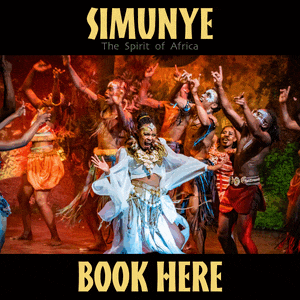Zimbabwe ChurchesChristian denominations that took root in Zimbabwe Churches.....
Anglican ChurchInspired by David Livingstone's writings, the Church of England had made tentative contacts with the area north of the Limpopo in 1860-80 but it was not until the 1890 occupation of Mashonaland by white settlers that a permanent physical presence was established. Apostolic Faith Mission in ZimbabweThe Apostolic Faith Mission of South Africa began its mission to Zimbabwe in 1929. The Church in Zimbabwe became independent in 1983, when it assumed its present name. Catholic ChurchThe Catholic Church first attempted to establish itself in Zimbabwe when the Jesuit priest, Goncalo de Silveria, reached the Munhumutapa’s capital in 1560. In the 17th century Dominicans worked among traders in north-east Zimbabwe but when the Portuguese were driven from the country by the Changamire in 1693 this work came to an end. The modern Church in Zimbabwe has its beginnings in the Zambezi Mission run by the Society of Jesus. A forward station was established at Gubulawayo in 1879, headed by Henry Depelchin. Other missions were started but little progress was made and in 1889 the Jesuits withdrew from the country. They returned in 1890 with the occupying forces, Father Hartmann accompanying the Pioneer Column as chaplain and Father Prestage accompanying the Dominican nuns who came up as nurses. The work in nursing and education undertaken by the Dominicans was an essential part of the early expansion of the Church. The Jesuits established Chishawasha mission near Harare and Driefontein mission near Masvingo.
Full Gospel Church of God in ZimbabweThis Church began its work in South Africa in 1910. It spread to Zimbabwe in 1948 and became independent from its parent body in 1983. Gutu ra JehovahA member of the British Methodist Church. Mai Kwenda died in 1948 and ‘rose again’. As Mai Chaza she began her healing work and, in Seke in 1954 built a healing centre, her first Guta ra Jehovah(City of God) to which people of all races came. In 1956 this centre was destroyed by fire and she built a new centre in Chief Zimunya’s land. Where she remained until moving to Zvimba shortly before her death in 1960. Mai Chaza is still the absent centre of the Church but the movement has drifted away from Methodism, although it uses Methodists hymns. Attitudes to medicine are flexible but the preferred means of healing is spiritual, there are no sanctions in the group against hospital treatment. Marange (Maranke) VapostoriIn 1932 Johane Marange began preaching a message of an unnamed apocalypse and the need to separate from the world. By the 1940’s his movement had spread to Mozambique and Zambia and across much of Zimbabwe. His Church centre in Marange communal land attracted many pilgrims who maintained links with the centre through visits by the Apostle – Johane Marange to outlying congregations. There have been several splits within the church, the main one occurring in 1963 following the Marange’s death when his sons disagreed with Simon, a founder member, over who should lead the church. Before Independence the Vapostori attract little attention from the government because their other worldly emphasis made them fairly apolitical. Since Independence, however, their relations with the government have become strained because of their strong resistance to immunisation and to participation in the educational system. There are signs of change, however with women and younger men favouring more flexible attitudes Masowe VapostoriIn 1932 a man named Shoniwa died and ‘rose gain’ as John of the Wilderness. He built up a small following in the Chegutu area but was arrested and deported to his home in Makoni, where he continued with his work until 1940. He moved to Bulawayo and later to South Africa, from which he and his followers were deported in 1960. The church’s headquarters’ were in Seke communal land until 1962 when John Masowe and many followers went to Zambia, where he died in 1973. His body was returned to Zimbabwe and buried near his place of birth in Makoni, now a place of annual pilgrimage. With its headquarters in Makoni, the Masowe Vapostori Church is now widespread in central and East Africa. Its members emphasise the fact that they are a community of the the save, cut off from the work socially and economically. Like Marange’s followers they hold meetings outdoors ‘in the wilderness’ but unlike the Marange Vapostori they allow children to be vaccinated and to attend school. New Apostolic ChurchThis Church is part of the Irvingite New Apostolic Church which started in Britain in 1831 and which since 1975, has been based in Switzerland. It began its African mission in Cape Town in 1893, soon thereafter moving to Zambia where it grew rapidly. It became established in Bulawayo and Harare in 1952. At is peak in the mid 1970 it had about 10 000 followers. Salvation ArmyIn 1891 the Salvation Army in the Transvaal sent a mission to Mashonaland where it was granted 3 000 acres in the Mazowe valley. By 1910 many people in the Chiweshe area had been converted and a new centre the Howard Institute was built in 1923. Seventh-Day Adventist ChurchThis Church, based in the USA, started work in Zimbabwe at Solusi Mission in 1894. From here it spread through Zimbabwe. United Church of Christ in ZimbabweThis church was formed in 1957 by a union of the American Board of Commissioners for Foreign Missions and Evangelical Reformed Churches. The ABCFM had entered Zimbabwe from Zululand in South Africa in 1883 and in 1893 after negotiations with Chief Gungunyana established the Mount Selinda and Chikore missions. Its goal was to prepare the people for the new social order by teaching them Christianity, nursing, school teaching, carpentry and building. United Methodist ChurchThis Church entered Zimbabwe from Mozambique in 1897 under the name of the Methodist Episcopal Church, which had been established in the USA in 1784. The Methodist Episcopal Church became the Methodist Church in 1939 and the United Methodist Church in 1968. Zimbabwe Assemblies of God AfricaThis Church was part of the Assemblies of God denomination until it became independent from the body in 1960. Zion Christian ChurchBegan in Zimbabwe in 1923 by Samuel Mutendi as an offshoot of the Transvaal ZCC, this Church developed as a Zimbabwean movement centred on Mutendi as healer and prophet. It flourished initially in the Bikita district, Mutendi’s home area. In the 1920s and 1930s, Mutendi was attacked by traditional Churches who felt politically threatened by the growth of his movement and by government authorities who objected to his establishing schools without their permission. After 1937, however, he was allowed to conduct public services and the movement expanded. Mutendi was increasingly sought after by the sick and disturbed and by chiefs as a rain-maker and political arbitrator. He encouraged this political aspect by empahasising his royal ancestry and by controlling the chiefs allegiance to the Mwari shrines. In the 1960 Bishop Mutendi was forced to leave Bikita for Gokwe, where he died in 1976. His son moved the Church back to the Masvingo area in 1981.
|
|
||
|
|
|||
|
| |||



